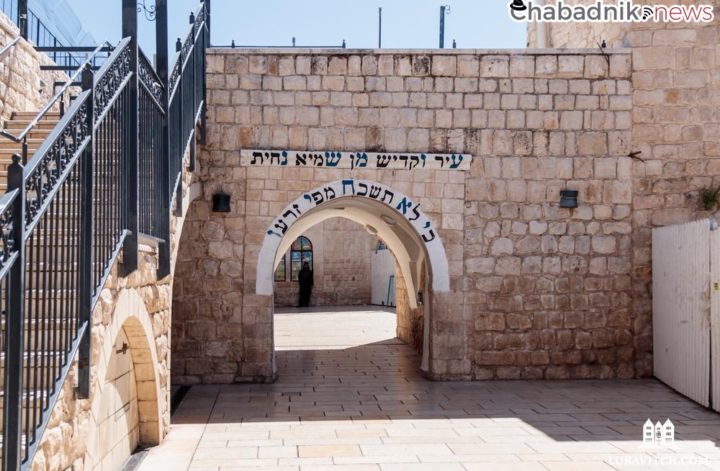If there is one Jewish food that virtually every Jew knows about, it’s matzah, the flat bread eaten at the Passover Seders and for the duration of the eight-day holiday. But how well do you know this food, which has been with us since the dawn of our peoplehood? Here are some of our favorite matzah myths.
In this article:
- 1. Myth: All Matzah Is Kosher for Passover
- 2. Myth: Matzah Is Supposed to be Square
- 3. Myth: The Matzah Needs to Be Baked Within 18 Minutes
- 4. Myth: By Definition, Matzah Is Hard and Crispy
- 5. Myth: Matzah Balls Are Super Traditional
- 6. Myth: Matzah Was Invented After We Left Egypt in a Hurry
- 7. Myth: The Bakeries Are Making a Killing
- 8. Myth: It’s OK to Nibble a Little
- 9. Myth: Matzah Isn’t Bread
1. Myth: All Matzah Is Kosher for Passover
As the quintessential Passover food, all matzah must be kosher for Passover, right? After all, what could be wrong with flour and water that’s baked into a hard cracker?
Fact: Only Matzah That’s Certified for Passover Use Is Acceptable
The box may look similar, and it may even have Hebrew letters all over it, but if there is no seal from a supervising rabbi or organization stating that the matzah is actually kosher for Passover, you can assume that no care was taken to ensure that the dough did not become chametz, and it may not be eaten on Passover.
Even if a small portion of the dough sat around long enough to become chametz, it would be forbidden for Passover use.
2. Myth: Matzah Is Supposed to be Square
For many people, matzah is a square cracker, coming neatly packed in a box filled with other crackers of identical size and shape. Many presume that this is what matzah has always looked like
Fact: Traditional Matzah Is Round
For thousands of years, matzah was made by hand, rolled out into a pancake and then baked. They are most often roundish, which is the easiest shape to roll out/punch down.
The square matzah came with the introduction of machine-made matzah, which spread through Europe in the wake of the Industrial Revolution. Machines made matzah faster and cheaper than bakers, but there was something missing: the human element.
This is important for a number of reasons, one of which is that the Torah enjoins us to “guard the matzahs” to ensure they don’t rise. When each matzah is rolled by hand, we know that an actual person worked on that matzah, taking care not to allow it to become chametz with the declared intention that it will be used for a mitzvah.
3. Myth: The Matzah Needs to Be Baked Within 18 Minutes
Every kid who has ever been to a model matzah bakery knows that the matzah needs to be baked within 18 minutes of the water touching the flour, or else it becomes chametz.
Fact: As Long As the Dough Is Being Worked, It Is OK
According to Jewish law, as long as the dough is being punched down and kneaded, it does not have the chance to rise and does not become chametz. Thus, matzah bakers can take their time, provided that the dough is constantly being kneaded.
In practice, however, most matzah bakeries bake their dough very quickly, and less than 5 minutes elapse from the time the flour and water kiss to the time the crispy matzah emerges from the oven.
4. Myth: By Definition, Matzah Is Hard and Crispy
For several hundred years, almost all matzah has been hard, thin and cracker-like, leading us to believe that this has always been the case.
Fact: Matzah Was Originally Thicker and Softer
In biblical and talmudic eras, matzah was baked fresh before Passover and was often quite soft and thick (the Talmud records a debate as to whether it may be thicker than a person’s fist). This explains why we are told that Hillel would wrap his marror (bitter herbs) and Paschal lamb with his matzah, something very hard to imagine with our modern matzahs.
5. Myth: Matzah Balls Are Super Traditional
To many Jewish people, the quintessential Passover food is a bowl of chicken soup with matzah balls (AKA kneidlach) floating on its glistening surface.
Fact: Many Avoid Matzah Balls for Most of Passover
Many communities, chassidic ones in particular, have the custom to refrain from eating gebrokts (matzah that has become wet, such as the matzah meal in the matzah balls) on the first seven days of Passover. They take this precaution because there is suspicion that during the baking process there may have been a minute amount of flour that did not get kneaded properly into the dough. Upon contact with water, that flour would become chametz.
On the eighth day of Passover, which exists only outside the Land of Israel, the gebrokts stringency doesn’t apply, and all feast on matzah balls and matzah brei. In fact, many have the custom to try to eat their matzah with as many liquids and wet foods as possible.
6. Myth: Matzah Was Invented After We Left Egypt in a Hurry
This little myth gets a boost from the Haggadah itself, where we read:
This matzah that we eat—for what reason? Because the dough of our fathers did not have time to become leavened before the King of the kings of kings, the Holy One, blessed be He, revealed Himself to them and redeemed them.
Reading this single line in isolation can lead a person to believe that matzah came into existence after it was accidentally made by the Israelites as they hurried out of Egypt.
Fact: G‑d Told Us to Eat Matzah on the Evening Before Exodus
That’s right. Before the actual Exodus took place, G‑d commanded that every Israelite family slaughter a lamb, which would then be eaten together with matzah and bitter herbs.
And it goes back even earlier. We read in the Haggadah, “This is the bread of affliction that our fathers ate in the land of Egypt,” implying that matzah was also the food our ancestors ate while slaving away for Pharaoh.
Thus, essentially, there are (at least) two modalities of Passover matzah: the matzahs eaten by our ancestors in brave anticipation of the Exodus, and those they ate in the desert that did not have time to rise.
7. Myth: The Bakeries Are Making a Killing
Hand-made shmurah matzah can easily cost upwards of $20 per pound (consisting of about six or seven matzahs). The cynic may wonder: How can a cracker that contains just flour and water cost more than three dollars? Someone’s getting rich here.
Fact: Handmade Shmurah Matzah Is Super Labor Intensive
Think about it. Everything that goes into shmurah matzah (which means “guarded,” since it is vigilantly guarded to ensure it does not become chametz) takes work.
The flour is harvested in a special run, conducted on a sunny day, carefully supervised by rabbis to ensure that the equipment and containers are all perfectly dry. The flour is then stored in a dry facility. The water is drawn from a well and then left overnight to attain the perfect temperature.
The baking process itself involves a veritable army of bakers, including someone to pour the water, someone to pour the flour, a muscular dough-mixer, kneaders, matzah-rollers, hole-punchers, bakers, cleaners, rolling-pin-sanders, inspectors, packers and others.
Factor in the salaries needed, and $20 per pound looks like a bargain.
8. Myth: It’s OK to Nibble a Little
Between four cups of wine, matzah, bitter herbs, more matzah and bitter herbs, and a full banquet, it’s tempting to practice portion control and just nibble the matzah. After all, we will be eating plenty of the stuff for the next eight days.
Fact: One Must Eat At Least the Bulk of an Olive (or Several, Actually)
Nibbling and tasting is not the same thing as eating. And you need to actually eat matzah. How much is considered “eating”? Halachah sets the threshold at a kezayit, which is roughly the same as an ounce. You need to eat a kezayit (ideally two) to fulfill the mitzvah of eating matzah, about two-thirds of an ounce of matzah as part of your korech sandwich, and another kezayit (ideally two) as part of the afikoman after you’ve enjoyed your feast.
9. Myth: Matzah Isn’t Bread
This one seems simple enough. We don’t eat bread on Passover. We do eat matzah. Ergo, matzah isn’t bread.
Fact: It Isn’t That Simple
Matzah is bread, it’s just bread that hasn’t risen, and only bread that has risen is forbidden on Passover. This is why, before we eat matzah, we say the Hamotzi blessing, which we always say before eating bread: “Blessed are You … who brings out bread from the earth.”



